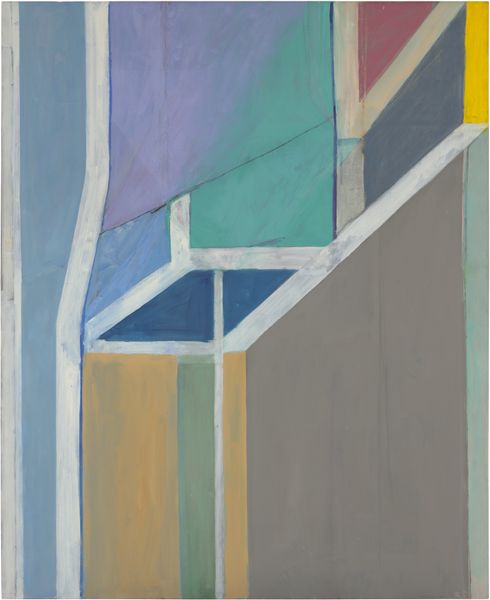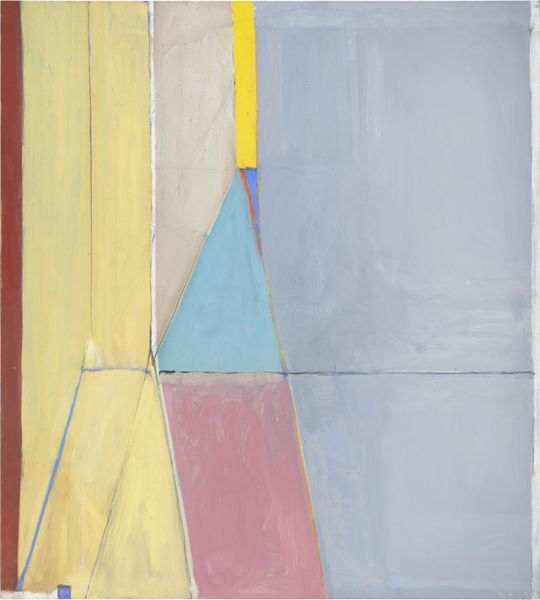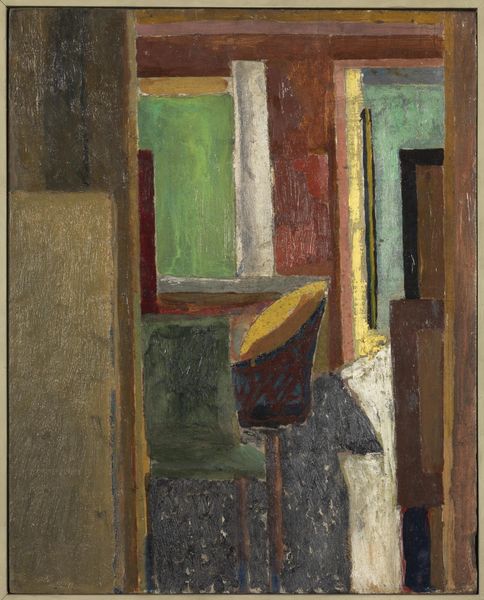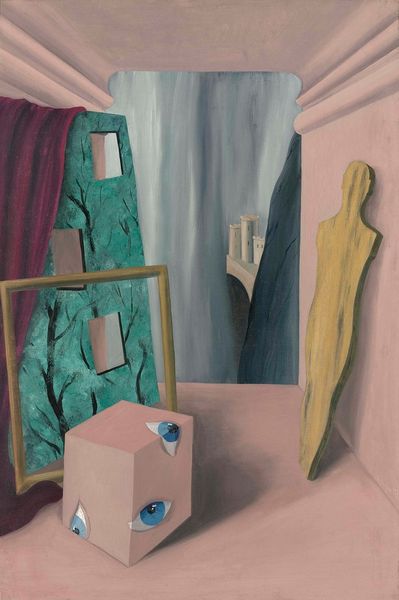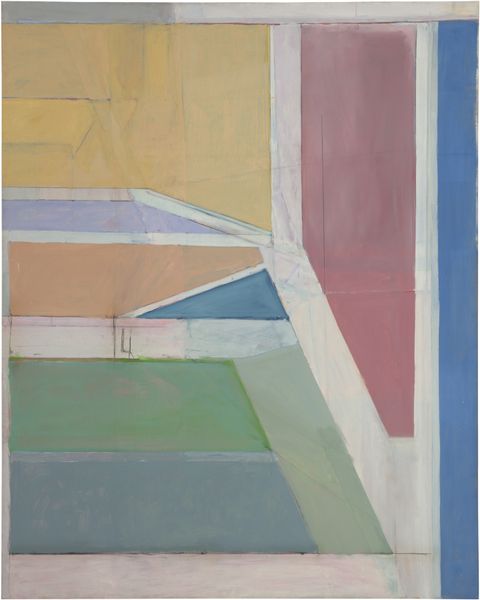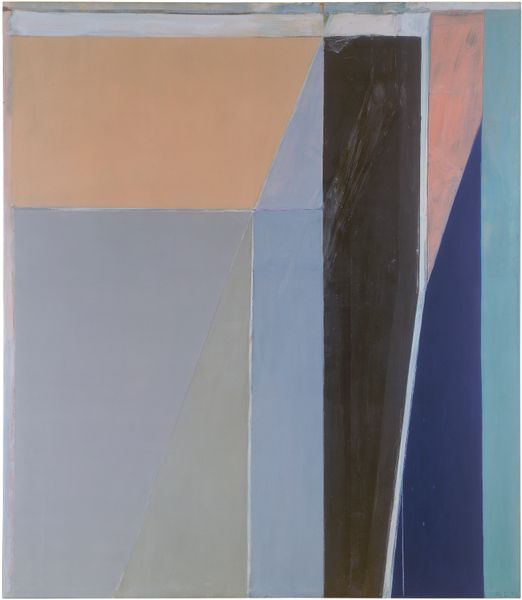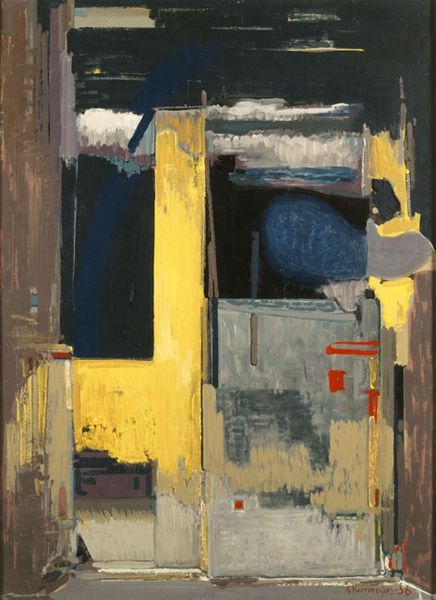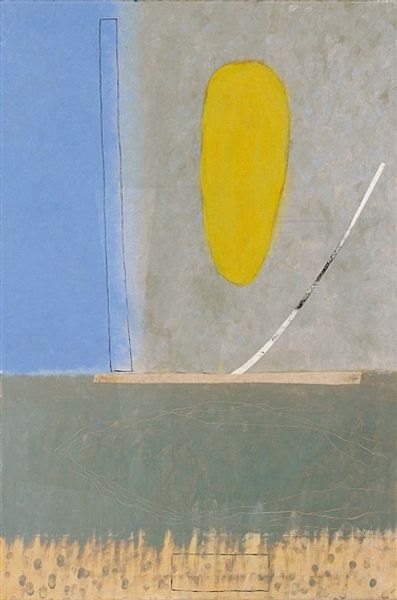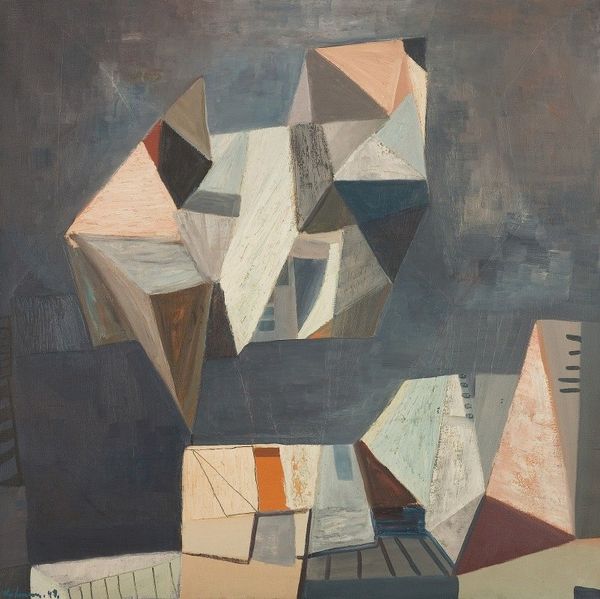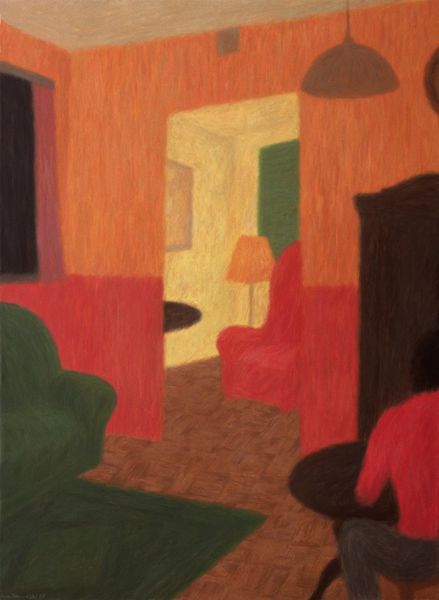
painting, oil-paint
#
painting
#
oil-paint
#
perspective
#
geometric
#
abstraction
#
cityscape
#
surrealism
#
architecture render
Dimensions: overall: 40.64 × 33.02 cm (16 × 13 in.) framed: 48.26 × 40.64 × 3.81 cm (19 × 16 × 1 1/2 in.)
Copyright: National Gallery of Art: CC0 1.0
Curator: Looking at Kay Sage's "Study for 'Third Paragraph'," painted in 1953, I'm struck immediately by its enigmatic calmness, wouldn’t you agree? There’s something deeply meditative about this arranged composition. Editor: It projects a quiet, still geometry, I must admit. Notice how Sage sets up a series of planar forms in recessive space. The interplay of blues and browns organizes our understanding, drawing our eyes, according to classical perspective, back through the imagined space of the canvas. Curator: Absolutely. It’s almost theatrical. And the floating cloth detail on the left— a ghost amidst the firm geometry. Does it symbolize something about our shifting perception or fragility? Or perhaps the ephemeral nature of a fleeting thought— a "third paragraph" left unwritten? Editor: The symbolic intent is, of course, elusive. What we do have is the sharp orthogonals—the edges that meet to describe this place and hold it firmly in perspectival space. Note how she uses these devices—along with that subtle palette—to unify the scene and project something both constructed and contained. Curator: "Contained" is the word! Trapped almost. This doesn’t strike me as a utopian vista; the colors are muted. Even the geometry can’t contain the gloom. What I call optimism; some others might call oppression. Editor: An intriguing position! While an architectural perspective like this, and within the formal logic we observe, Sage subtly introduces asymmetry and ambiguous spatial relations, disrupting any strict, totalized reading. Curator: Do you believe, given its title as a "study", it was a warm-up for something bigger? Or can these smaller works become something beautiful as finished artwork unto itself? Editor: It’s tempting to see this painting solely through the lens of preparatory studies, though, given the artist's intent, each picture presents its own complete aesthetic experience and can be appreciated by studying its internal relation. Curator: You may be correct. These works serve as perfect examples that let me daydream. With her architectural scenes, my imagination runs wild! But maybe it’s only Kay Sage teasing my consciousness... Editor: Or, if I might add, a painter challenging the viewer to move beyond the surfaces, where our mind searches its memory palace— and our awareness may truly live.
Comments
No comments
Be the first to comment and join the conversation on the ultimate creative platform.
